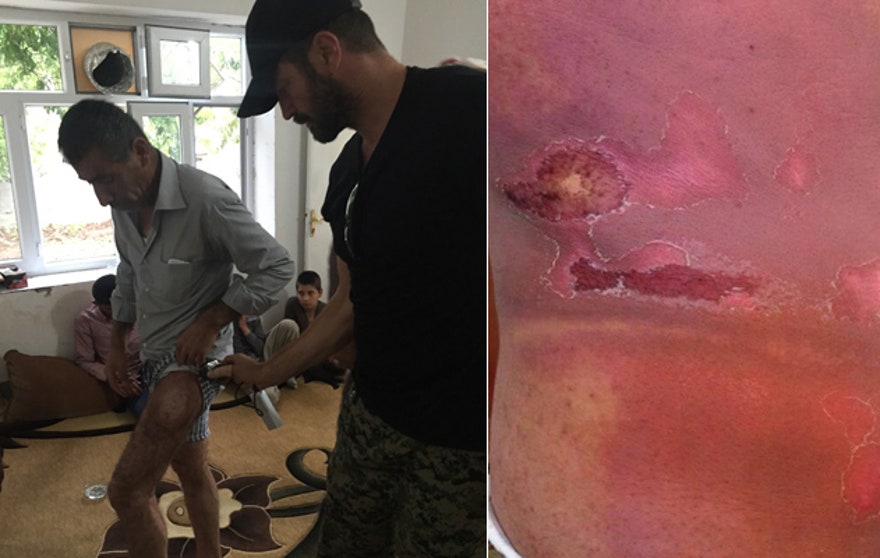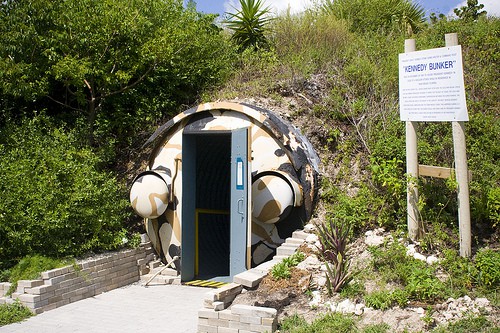Barack Obama responded in anger when he was told Russia had taken control of bases in Syria; yet if he was engaged in real intelligence discussions daily on presidential briefings rather than being focused on Climate Change, conditions would and could have been offensive rather than defensive.
Russia’s Syrian Air Base Has U.S. Scrambling for a Plan
The Barack Obama administration and the U.S. intelligence community have concluded that Russia is set to start flying combat missions from a new air base inside Syria, but there’s disagreement inside the U.S. government on what to do about it.
Thursday at the White House, top officials were scheduled to meet at the National Security Council Deputies Committee level to discuss how to respond to the growing buildup of Russian military equipment and personnel in Latakia, a city on the Syrian coast controlled by the Bashar al-Assad regime. Obama has called on his national security officials to come up with a plan as soon as possible, as intelligence reports pour in about the Russian plans to set up an air base there. The options are to try to confront Russia inside Syria or, as some in the White House are advocating, cooperate with Russia there on the fight against the Islamic State.
The State Department had already begun pushing back against the Russian moves, for example by asking Bulgaria and Greece to deny overflight permissions to Syria-bound Russian transport planes. But the president didn’t know about these moves in advance, two officials said, and when he found out, he was upset with the department for not having a more complete and vetted process to respond to the crisis. A senior administration official said Tuesday evening that the White House, the State Department and other departments had coordinated to oppose actions that would add to Assad’s leverage.
For some in the White House, the priority is to enlist more countries to fight against the Islamic State, and they fear making the relationship with Russia any more heated. They are seriously considering accepting the Russian buildup as a fait accompli, and then working with Moscow to coordinate U.S. and Russian strikes in Northern Syria, where the U.S.-led coalition operates every day.
For many in the Obama administration, especially those who work on Syria, the idea of acquiescing to Russian participation in the fighting is akin to admitting that the drive to oust Assad has failed. Plus, they fear Russia will attack Syrian opposition groups that are fighting against Assad, using the war against the Islamic State as a cover.
“The Russians’ intentions are to keep Assad in power, not to fight ISIL,” one administration official said. “They’ve shown their cards now.”
The U.S. intelligence now shows that Russia is planning to send a force into Syria that is capable of striking targets on the ground. Two U.S. officials told me that the intelligence community has collected evidence that Russia plans to deploy Mikoyan MiG 31 and Sukhoi Su-25 fighter planes to Latakia in the coming days and weeks. The military equipment that has already arrived includes air traffic control towers, aircraft maintenance supplies, and housing units for hundreds of personnel.
Secretary of State John Kerry called Russian Foreign Minister Sergei Lavrov last Saturday to urge him to halt the Russian military buildup, but the Russian told Kerry that his military was doing nothing wrong and that Russia’s support for Syria would continue, according to one official who saw a readout of the call. That response was seen inside the administration as a rebuke of Kerry’s efforts to reach out to Moscow to restart the Syrian political process. Kerry met with Lavrov and the Saudi foreign minister on the issue last month.
This is a turn of events from the situation this summer. In July, Russian President Vladimir Putin called Obama and according to Obama, Putin was moving away from a weakened Assad.
“I think they get a sense that the Assad regime is losing a grip over greater and greater swaths of territory inside of Syria [to Sunni jihadist militias] and that the prospects for a [Sunni jihadist] takeover or rout of the Syrian regime is not imminent but becomes a greater and greater threat by the day,” Obama told the New York Times. “That offers us an opportunity to have a serious conversation with them.”
But since then, Putin has been moving away from a serious conversation with the U.S. about a diplomatic solution in Syria. Just as the Russian military buildup was beginning last week, Putin said publicly that Assad was ready to engage with the “healthy” opposition, a far cry from the process the U.S. is promoting, which would bring the Western-supported Syrian opposition into a new round of negotiations with the regime.
“Russia’s support for the Assad regime is not helpful at all, it’s counterproductive, and it’s against some of the things they have said about trying to bring about a solution,” Senator Ben Cardin, the top Democrat on the Senate Foreign Relations Committee, told me Wednesday. “It’s disappointing, but it’s been consistent with some of the policies they’ve done in the past that we think are just wrong.”
Putin is planning to focus on the fight against “terrorism” in his speech later this month at the United Nations General Assembly in New York. Russia will also host a ministerial-level meeting on the sidelines about fighting extremism, which it defines as including all the groups fighting the Assad regime, including the U.S.-backed rebels.
There is concern inside the Obama administration, even among those who advocate for confronting Russian actions in Syria, that the U.S. has no real leverage to fight back. If Obama decides not to accept the Russian air force presence in Syria, he would have several options, all of which have drawbacks or limitations.
The U.S. could impose new sanctions on Russia, although the current punishments related to Ukraine have not changed Putin’s calculus, and there’s little chance European countries would join in on a new round. The U.S. might warn Russia that its base is fair game for the opposition to attack, but that could spur Putin to double down on the deployment. The U.S. could try to stop the flow of Russian arms, but that would mean pressuring countries such as Iraq to stand up to Putin and Iran, which they might not agree to.
Republican Senator Lindsey Graham said Wednesday he would try to impose sanctions on Russia from the Congressional side if the administration doesn’t move in that direction. He said that Russia’s military involvement in Syria will only make the terrorism threat and the refugee problems emanating from there worse.
“This is a chance for us to slap Russia hard, because what they are doing is making America less safe,” he said. “The Russians are just slapping President Obama and Secretary Kerry in the face. This is a complete insult to their efforts to try to find a solution to Syria. They’ve made Assad’s survivability more likely, which means the war in Syria never ends.”
The White House’s concerns about escalating tensions with Russia inside Syria are legitimate, but cooperating with Russian forces on the ground or in the air would undermine whatever remaining credibility the U.S. has with the Syrian opposition and the Gulf States that support it. The U.S. may not be able to stop Russia’s entry into fighting the Syrian civil war, but at a minimum America shouldn’t be seen as colluding with Moscow. If that happens, the suspicion that Obama is actually working to preserve the Assad regime will have been confirmed.
***
Russia learned lessons from Egypt and Afghanistan, applying today in Syria
Expanded Syria Presence Would Carry Big Risks for Russia
In July 1972, Soviet forces were ordered out of Egypt by Anwar Sadat, signaling the end of serious military involvement in the region by Moscow. Now, forty-three years later, Russian troops are returning.
According to the New York Times, “Russia has sent a military advance team to Syria and has transported prefabricated housing units for hundreds of people to an airfield near Latakia, according to American intelligence analysts.” The Times adds that “Russia has also delivered a portable air traffic station to the airfield and has filed military overflight requests through September.” The reports follow closely on the heels of similar allegations in recent weeks, including reports of new arms, and even combat troops. U.S. military officials said Tuesday that Russia has moved new personnel, planes and equipment into Syria in recent days.
That Moscow is heavily involved in the Syria conflict is not itself news. Russian military links with the Assad regime go back many years — the USSR, and then Russia, long operated a naval station at the Syrian port of Tartus, and Moscow has provided Assad with what Russian President Vladimir Putin recently described as “serious” amounts of military equipment and training to prosecute its civil war.
Russia has also had a prominent diplomatic role in the Syrian conflict. It has shielded the Assad regime from pressure by vetoing a number of UN Security Council resolutions on the conflict. More recently Moscow has become the nexus of diplomatic activity aimed at ending the fighting; Russia has hosted a parade of Western and Middle Eastern officials including both Secretary of State John Kerry and Iran’s General Qassem Soleimani, as well as two rounds of multilateral discussions.
The proximate aim of Russian policy seems clear: to protect the Assad regime, for decades an ally of Moscow’s and in more recent years one of Russia’s last remaining channels of influence in the Middle East. Mr. Putin has criticized the Syrian regime and acknowledged that “a process of political change” is needed, but has steadfastly refused to withdraw his support for Assad or suggest that he should be replaced as part of any political transition. Russian weapons, ammunition, and spare parts keep Assad’s war machine running.
Regime strongholds have come under increasing pressure in recent months from rebel forces, which likely contributed to Moscow’s decision to step up its support. Beyond any direct military effect, the Russian moves may signal to rebels, and their foreign backers, the depth of Moscow’s commitment to the regime, thus dampening their hope for a military victory and bolstering their incentive to accept a resolution on terms preferred by Russia and Mr. Assad.
Mr. Putin has asserted that Russian aid to Syria is part of an effort to fight “extremism and terrorism.” While Russia’s motivation to help Mr. Assad is doubtless reinforced by the presence of jihadist groups among the Syrian opposition, Russian aid to Damascus predated the rise of ISIS or Jabhat al-Nusra and puts Moscow at odds not only with Islamists but with the entire Syrian opposition. Indeed, the Syrian regime, with Russia’s support, has even indiscriminately targeted civilians, inflicting a tremendous humanitarian toll and likely fueling rather than stemming the rise of jihadism.
The Russian gambit, however, likely has wider aims. The involvement of Russian forces on the side of the regime would complicate any American military action against Mr. Assad, including a no-fly zone. Like the impending sale of the advanced S-300 air defense system to Iran, it has the effect not only of enhancing Russian influence but limiting US options and influence at a time where Moscow may calculate that Washington is unlikely to respond sharply.
Finally, direct Russian military involvement would be consistent with Moscow’s recent, revanchist pattern of behavior globally. Mr. Putin has spoken of restoring Russia’s faded glory, and has made good on his musings in Georgia, Crimea, Ukraine, and via the increasingly aggressive behavior of Russian air and naval forces around the world. So too would deeper involvement in the Middle East hearken to Russia’s past.
Whatever Moscow’s motivation, expanded Russian military involvement in Syria, should it come to pass, seems likely to be a lose-lose proposition for the United States and Russia. For Washington, it would seriously complicate any contemplated military pressure on the Syrian regime, and lend Assad renewed confidence that would make more remote any diplomatic settlement acceptable to the U.S. and the Syrian opposition. Russia, meanwhile, will be further yoked to a vulnerable and needy ally while antagonizing regional powers such as Israel and Saudi Arabia. An increased Russian presence may itself become a target for Syrian opposition and jihadist elements, with resulting Russian casualties. Rather than recalling past glories, the move may prove a reminder of why they faded in the first place.
Michael Singh is the Lane-Swig Senior Fellow and managing director at The Washington Institute. From 2005 to 2008, he worked on Middle East issues at the National Security Council. Jeffrey White is a defense fellow at the Institute and a former senior defense intelligence officer. This article originally appeared on the Wall Street Journal blog “Think Tank.”



 Lebanese supporters of Hezboollah celebrate in May 2014. (Photo: Ali Hashisho/Reuters)
Lebanese supporters of Hezboollah celebrate in May 2014. (Photo: Ali Hashisho/Reuters)





